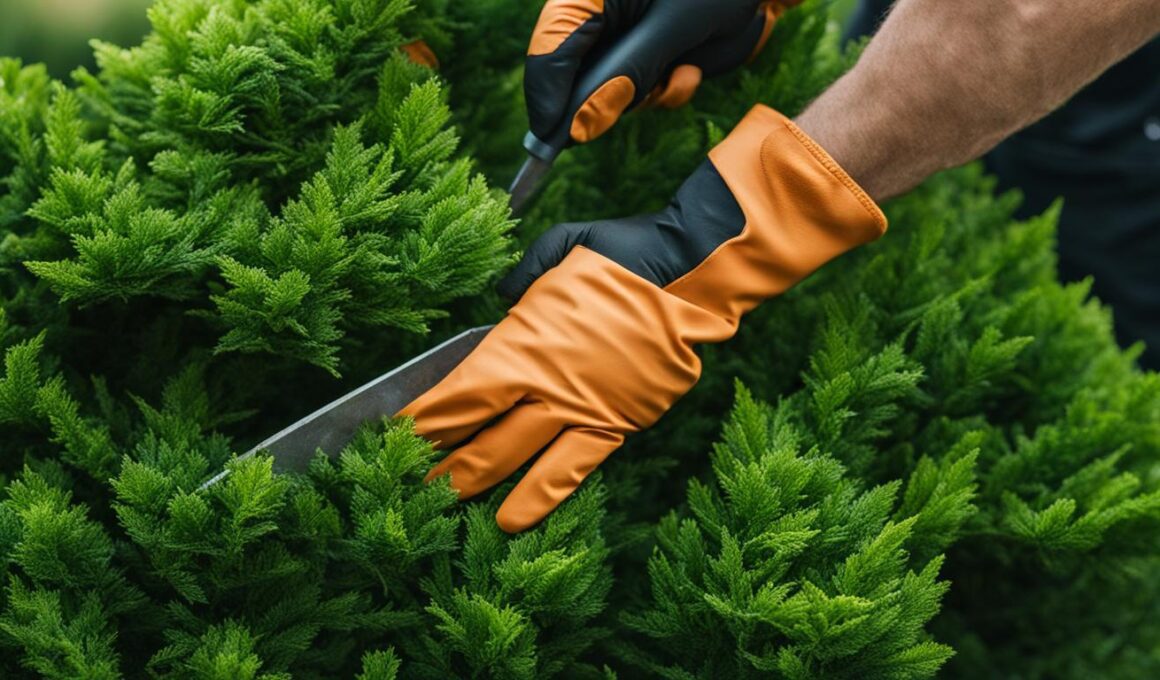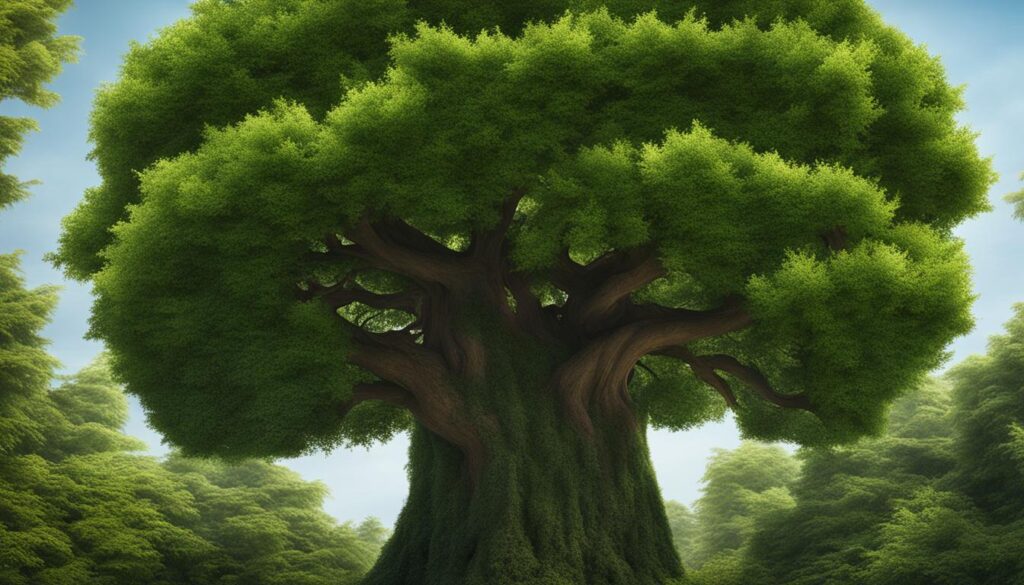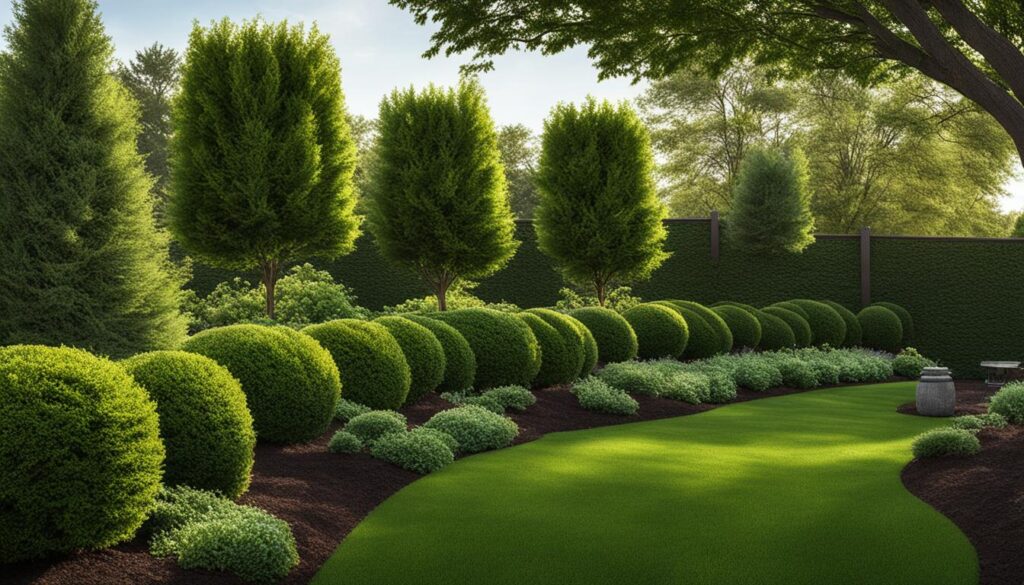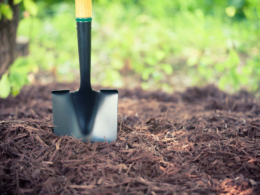If you have arborvitae trees in your yard, you know how beautiful and low maintenance they can be. However, these trees are not immune to problems like browning leaves, insect infestations, and diseases. It’s important to know how to treat arborvitae disease to ensure the health and longevity of these trees.
Arborvitae trees can face various issues, such as browning leaves, cypress tip moth miners, bagworm infestation, sooty mold, and root rot. Browning leaves can be caused by factors like insufficient watering or over-fertilization. Cypress tip moth miners are caterpillars that eat needle tips and can be removed by handpicking or cutting infested branches. Bagworms form cocoon-like nests and can be treated with insecticides. Sooty mold on arborvitae is caused by scale insects and can be eliminated by spraying plants with Bugtrol and Maverik. Root rot is a fungal infection that causes reddish-brown discoloration in the tree and can be treated with fungicides.
Post Summary
- Arborvitae trees can face issues like browning leaves, insect infestations, and diseases.
- Browning leaves can be caused by insufficient watering or over-fertilization.
- Cypress tip moth miners can be removed by handpicking or cutting infested branches.
- Bagworms can form cocoon-like nests and should be treated with insecticides.
- Sooty mold on arborvitae is caused by scale insects and can be eliminated with Bugtrol and Maverik.
- Root rot is a fungal infection that can be treated with fungicides.
Common Arborvitae Problems
Arborvitae trees are known for their beauty and low maintenance, but they can be susceptible to various issues that can affect their health. Understanding these common problems can help you take proactive steps to prevent and address them, ensuring the vitality and longevity of your arborvitae.
1. Bagworm Infestation: Bagworms are a common issue for arborvitae trees. These pests create cocoon-like nests and feed on the foliage, causing significant damage if left untreated. Regular inspections and prompt removal of bagworms can help prevent their spread and protect the health of your tree.
2. Scale Insects: Scale insects are another common problem for arborvitae. These sap-feeding pests can cause discoloration and weaken the tree over time. Inspect your arborvitae regularly for signs of scale infestation, such as yellowing or blackening of the foliage. Treat affected areas promptly to prevent further damage.
3. Spider Mites: Spider mites are tiny pests that can wreak havoc on arborvitae trees. These microscopic insects feed on the sap, leading to dull green foliage and the presence of webbing. Regularly inspect your tree for signs of spider mites and take appropriate action to control their population.
“Prevention is key to keeping arborvitae healthy. Regular tree and shrub health care programs can help prevent common problems like pests, diseases, and environmental stressors.”
4. Malnutrition: Improper nutrition can also impact the health of your arborvitae. Insufficient or excessive fertilization, as well as nutrient deficiencies, can cause yellowing or browning of the foliage. It is important to provide your tree with adequate nutrients through proper fertilization and ensure it receives the right balance of essential elements.
5. Other Potential Problems: In addition to the above-mentioned issues, arborvitae trees can also face problems due to improper watering, planting, winter burn, or soil contaminants. It is essential to follow proper care guidelines, such as watering deeply but infrequently, planting in well-draining soil, and protecting the tree from harsh winter conditions.
By understanding and addressing these common arborvitae problems, you can ensure the health and vitality of your trees. Regular monitoring, prompt treatment, and proper care techniques can go a long way in preventing and mitigating the impact of these issues on your arborvitae.
Comparison of Common Arborvitae Problems
| Problem | Signs and Symptoms | Treatment | Prevention |
|---|---|---|---|
| Bagworm Infestation | Presence of cocoon-like nests, foliage damage | Manual removal, insecticides | Regular inspections, prompt removal |
| Scale Insects | Discoloration, weakened foliage | Targeted insecticides | Regular inspections, early treatment |
| Spider Mites | Dull green foliage, webbing | Mite-specific products | Regular inspections, early treatment |
| Malnutrition | Yellowing or browning foliage | Proper fertilization | Regular soil testing, proper fertilization |
| Other Potential Problems | Varied depending on the issue | Dependent on the specific problem | Proper care techniques |
Arborvitae Treatments and Management
If your arborvitae trees are facing issues such as browning leaves, insect infestations, or diseases, it’s important to implement effective treatments and management strategies. By taking the appropriate steps, you can ensure the health and longevity of your arborvitae. Here are some options for treating and managing common arborvitae problems:
Pruning and Discarding Infected Plant Parts
One of the most crucial steps in managing arborvitae problems is pruning and discarding infected plant parts. This helps prevent the spread of diseases and eliminates infested areas. Ensure that you use clean, sharp pruning tools to minimize the risk of further damage. It’s also important to properly dispose of the pruned material to prevent reinfestation.
Targeted Chemical Treatments
In some cases, chemical management may be necessary to control pests and diseases affecting your arborvitae. Consult with a professional or local arborist to identify the specific products that are safe and effective for use on arborvitae. Make sure to carefully follow the instructions and precautions provided by the manufacturer when applying these treatments.
Proper Nutrition and Planting Techniques
Maintaining proper nutrition is essential for the health of your arborvitae. Ensure that you fertilize your trees with appropriate nutrients according to their specific needs. Additionally, follow proper planting techniques such as providing adequate spacing between trees and ensuring well-drained soil. These practices can help prevent malnutrition and other issues.
By implementing these treatments and management strategies, you can effectively control arborvitae problems and ensure the long-term health of your trees.
| Treatment Options | Benefits | Considerations |
|---|---|---|
| Pruning and discarding infected plant parts | – Prevents disease spread – Eliminates infested areas |
– Use clean, sharp pruning tools – Properly dispose of pruned material |
| Targeted chemical treatments | – Controls pests and diseases – Effective for specific problems |
– Consult with professionals – Follow product instructions and precautions |
| Proper nutrition and planting techniques | – Maintains tree health – Prevents malnutrition and other issues |
– Use appropriate fertilizers – Follow recommended planting practices |
Arborvitae Biology and Ecology
Arborvitae trees belong to the Cupressaceae family and are commonly used in landscaping due to their beauty and resilience. There are several species of arborvitae, including northern white-cedar, western red-cedar, and various hybrid varieties. These trees are known for their natural defense mechanisms, making them resistant to many pests and diseases.
One of the most common diseases that affect arborvitae is needle blight, caused by fungi such as Phyllosticta and Pestalotiopsis. Phyllosticta primarily targets the needles, while Pestalotiopsis can infect the stems and small branches. Wet weather conditions can facilitate the spread of these pathogens.
By implementing these arborvitae care tips, you can prevent common problems and ensure the health and beauty of your trees for years to come.
Conclusion
In conclusion, treating arborvitae disease is crucial to ensure the long-term health and beauty of these valuable trees in your landscape. By following proper treatment and management strategies, you can effectively address common issues like browning leaves, insect infestations, and diseases.
Regular pruning and the removal of infected plant parts play a significant role in controlling pests and diseases. Additionally, targeted chemical treatments using specialized products can help combat these issues effectively. It is important to consult with tree care professionals for accurate diagnosis and appropriate treatment.
Prevention is key in maintaining the well-being of your arborvitae trees. Implementing tree and shrub health care programs, proper fertilization, and planting techniques can help prevent malnutrition and other nutrition-related issues. By taking these necessary steps and seeking professional assistance when needed, you can ensure the longevity and vitality of your arborvitae trees.
FAQ
What causes browning leaves on arborvitae?
Browning leaves on arborvitae can be caused by factors such as insufficient watering or over-fertilization.
How can I remove cypress tip moth miners from my arborvitae?
Cypress tip moth miners can be removed by handpicking or cutting infested branches.
What can I do about bagworm infestation on my arborvitae?
Bagworms can be treated with insecticides or manually removed by hand.
How can I get rid of sooty mold on my arborvitae?
Sooty mold caused by scale insects can be eliminated by spraying plants with Bugtrol and Maverik.
What is root rot and how can it be treated on arborvitae?
Root rot is a fungal infection that causes reddish-brown discoloration in the tree. It can be treated with fungicides.
How Can I Prevent Arborvitae Disease in My Wall Garden?
To prevent arborvitae disease in your wall garden, consider planting disease-resistant varieties such as Techny arborvitae. Regularly inspect the plants for signs of disease and promptly address any issues. Proper watering and fertilizing, as well as providing adequate air circulation, are also top wall garden ideas for preventing arborvitae disease.











